When a child is born with a facial deformity, it can be a difficult experience for the entire family. Although many different treatments and surgeries can offer hope and reassurance, they are often beyond the family’s reach and financial scope. The Little Baby Face Foundation is changing that situation one child at a time.
Our available reconstructive services aim to treat children 0-21 years of age with their facial birth defects and help their families through the ordeal as smoothly as possible.
There are many different types of facial birth deformities that the Little Baby Face Foundation treats. As part of our quest to help every child born with a facial deformity, we strive to educate and offer resources to parents, and donors.
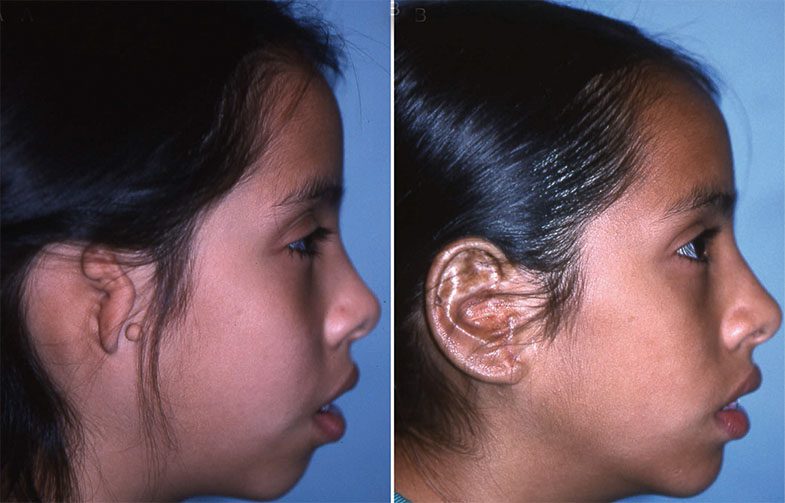
Microtia means that the child has a small, abnormally shaped or absent external ear. It can occur on one side of the head (unilateral) or both sides (bilateral). Microtia occurs once 8,000-10,000 births in the general population; bilateral microtia occurs once in every 18,000 births. Male children have this deformity more than females and the right side is more common than the left.
The causes of microtia are difficult to define. Some theories point toward a decrease in blood supply to the developing ear in utero. Others involve certain medications taken by the mother during pregnancy, such as Accutane, Thalidomide, and retinoic acid.
Environmental factors have also been considered.
The Little Baby Face Foundation works to correct microtia through reconstruction and
restoration of the ear using the patient’s own body cartilage.
Children born with ear deformities often suffer hearing loss due to the absence of their ear canals and/or middle ear structures.
Children born with both ears deformed (called auricular atresia with absent ear canals) need immediate attention and hearing rehabilitation to avoid the devastating effects of early deafness on their growth and development.
Combining external ear reconstruction with functional restoration of hearing provides affected children with significant cosmetic improvement and recovery of useful hearing, enabling them to mingle with their peers, participate in activities, learn and compete in the classroom, and eventually in the workplace.
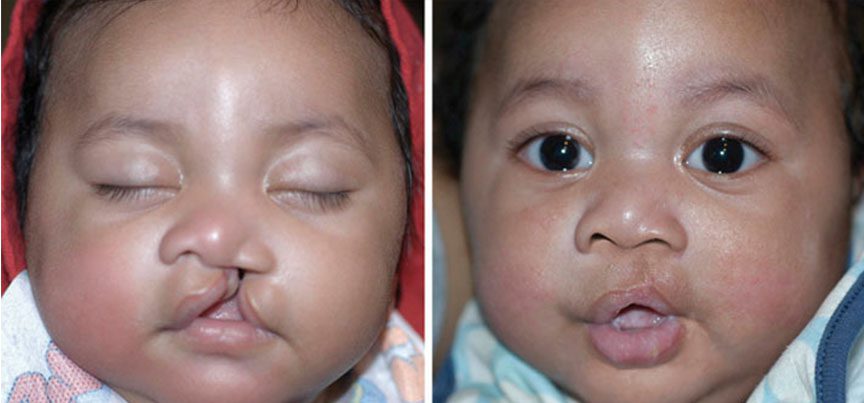
Cleft lip (CL) can be an isolated deformity or can be found in conjunction with a cleft palate (CP).
In general, the condition refers to a separation of the parts or segments of the lip or roof of the mouth, which are usually joined during the early weeks of development of an unborn child. Cleft palate is an opening in the roof of the mouth. It occurs when the two sides of the palate do not fuse as the unborn baby develops. Cleft deformities often occur without any previous family history. Among the factors that are known to increase the risk of a child’s developing CLP are smoking or drinking by the mother during pregnancy.
Repair of these problems is not only important medically, but also cosmetically and emotionally, since the child’s speech, and physical appearance is impaired, which can prevent acceptance by peers.
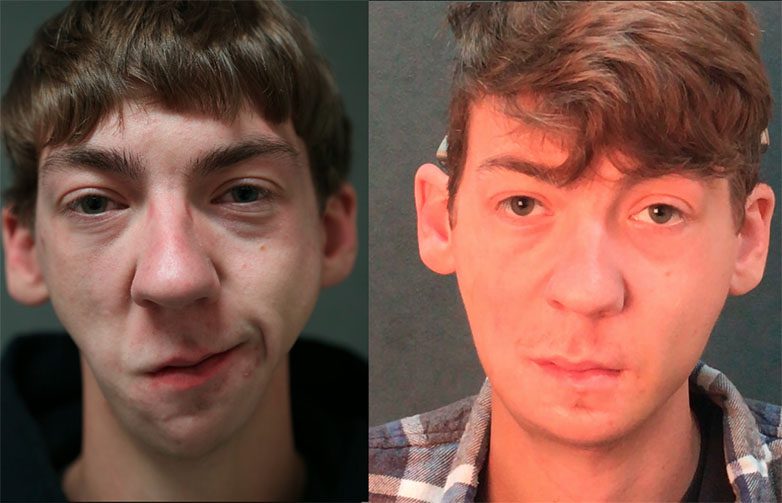
A child born with facial palsy cannot smile or laugh, or express any facial movement at all.
The act of facial motion starts in the brain and travels through the facial nerves to the
muscles in the face. The coordinated activity of this nerve and these muscles cause motions such as smiling, blinking, frowning, and a full range of normal facial motions.
Facial paralysis in children can be caused by the failure of the brainstem nuclei to develop (a condition known as Moebius Syndrome), a trauma to the nucleus of the facial nerve, and tumors or trauma to the facial nerve.
A variety of medical techniques, coupled with cosmetically placed incisions, can restore a smile to a child’s face. To achieve facial balance and reanimation, surgeons are employing eyelid weights, local muscle slings, nerve grafts and microvascular muscle transplants.
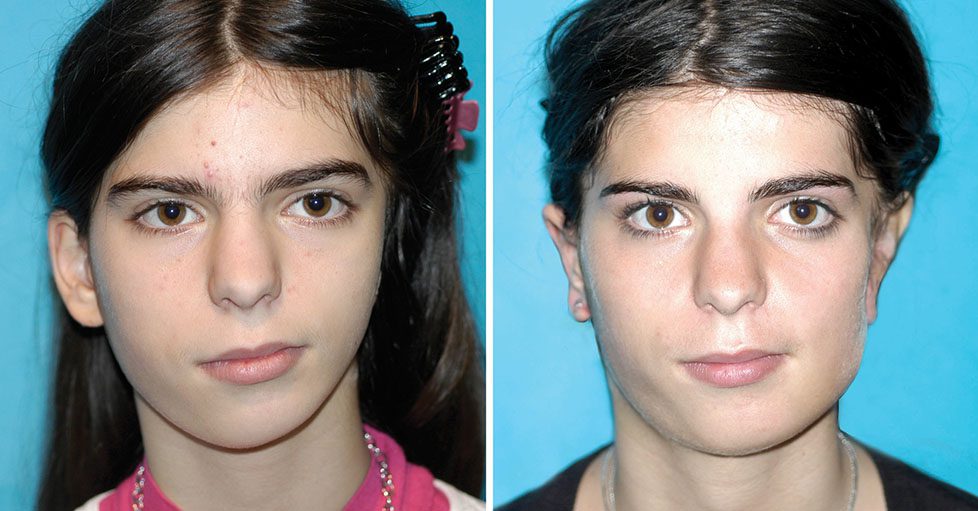
Hemifacial microsomia (HFM) is a condition that affects the bone, muscle, fat, and nerves of the face.
The physical deformities and traits of HFM vary on a spectrum from a mild presentation with slight asymmetry to severe absence of facial structures. This condition is progressive and becomes more apparent as the individual matures. HFM is the second most common facial deformity. It occurs in approximately 1 in every 5,600 births. The cause is unknown, and there is no gender predilection.
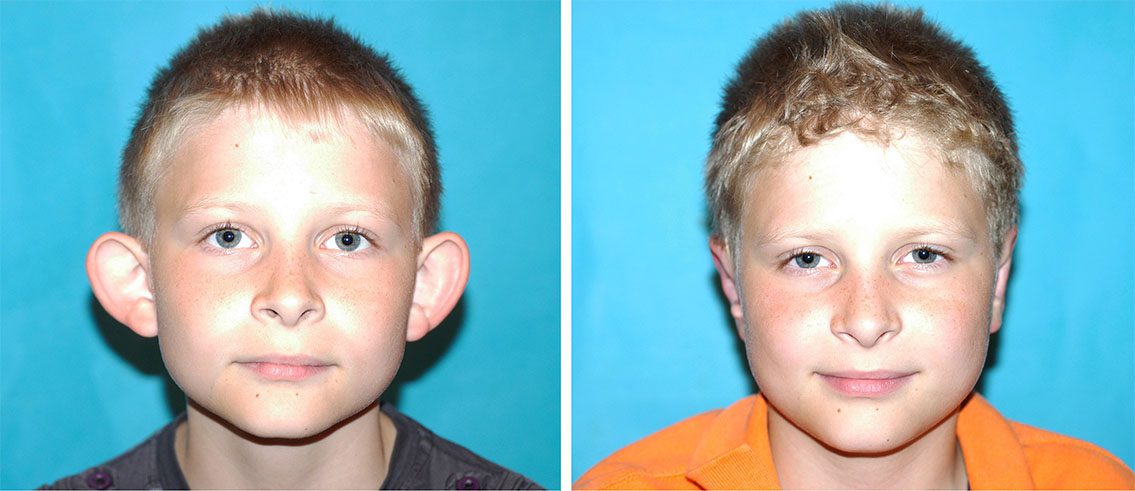
Many children are born with protruding or disfigured ears, which may become a source of painful emotional trauma as the child tries to “fit in” with his or her peers.
Reconstructive ear surgery, commonly referred to as otoplasty, can improve the shape, position or proportion of the ear, as well as increase the child’s self-esteem significantly. The surgery can correct a congenital birth defect in the ear structure that becomes more apparent as the child develops, or it can treat misshapen ears caused by injury.
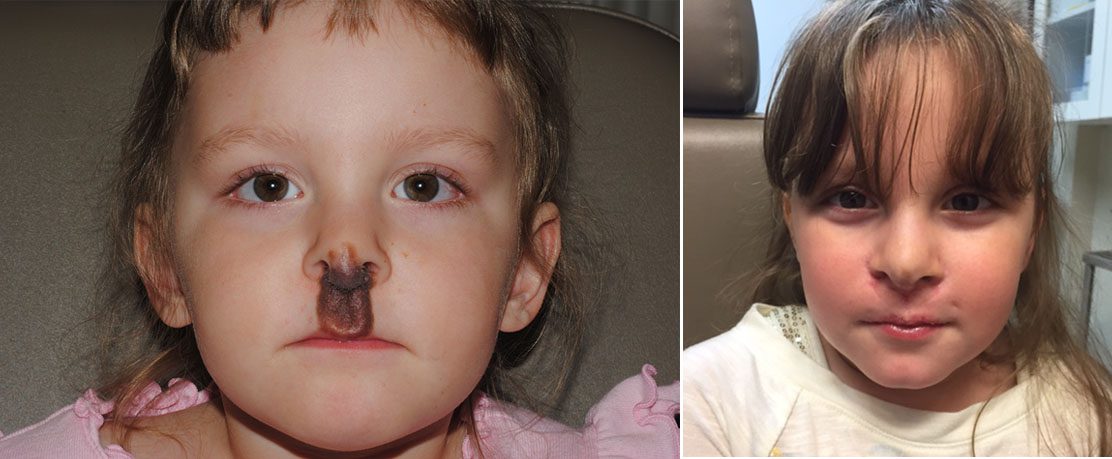
Although birthmarks are a common occurrence, some children may be born with concentrated areas of hyperpigmentation, called vascular birthmarks; which appear as red or brown spots on the face or neck. Vascular birthmarks are classified as either hemangiomas or vascular malformations and can be corrected through surgery.
Often, these skin defects present themselves at birth and fade as the child ages, but severe hemangiomas may require corrective surgery with skin grafting techniques to ensure that the child has a normal quality of life and a childhood free from peer ridicule.
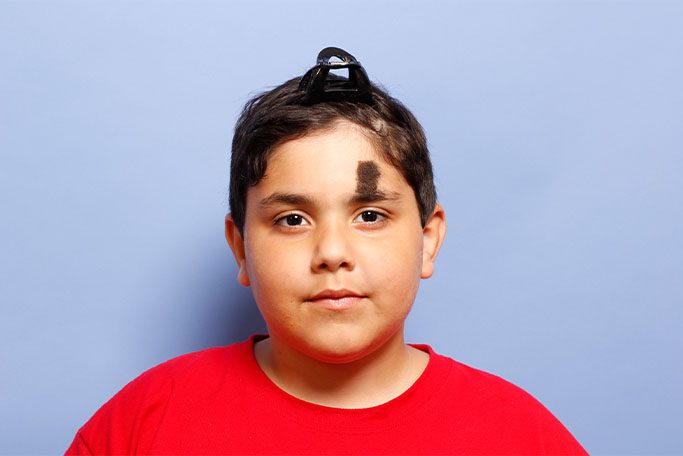
Pigmented spots (nevi), while part of the normal aging process, are not common in children. Occasionally congenital pigmented nevi are important to note because they are considered to have a small chance of malignant degeneration.
Small nevi can be removed without much difficulty in just one excision procedure. However, larger congenital pigmented nevi pose a demanding reconstructive challenge and should be treated by experienced pediatric plastic surgeons, such as those of The Little Baby Face Foundation. The removal of very large nevi may require multiple stages or placement of tissue expanders to create extra skin. In cases where the hairy nevus is located on the nose, ears or eyelids removal may include a skin graft from another part of the body.
In addition to all of these facial birth deformities, the Little Baby Face Foundation also treats children with:
• Alteriovenous Malformation
• Atresia (Malformed Ear Canals)
• Facial Atrophy
• Facial Clefts
• Facial Tumors
• Nasal Atresia
• Nasal Clefts
